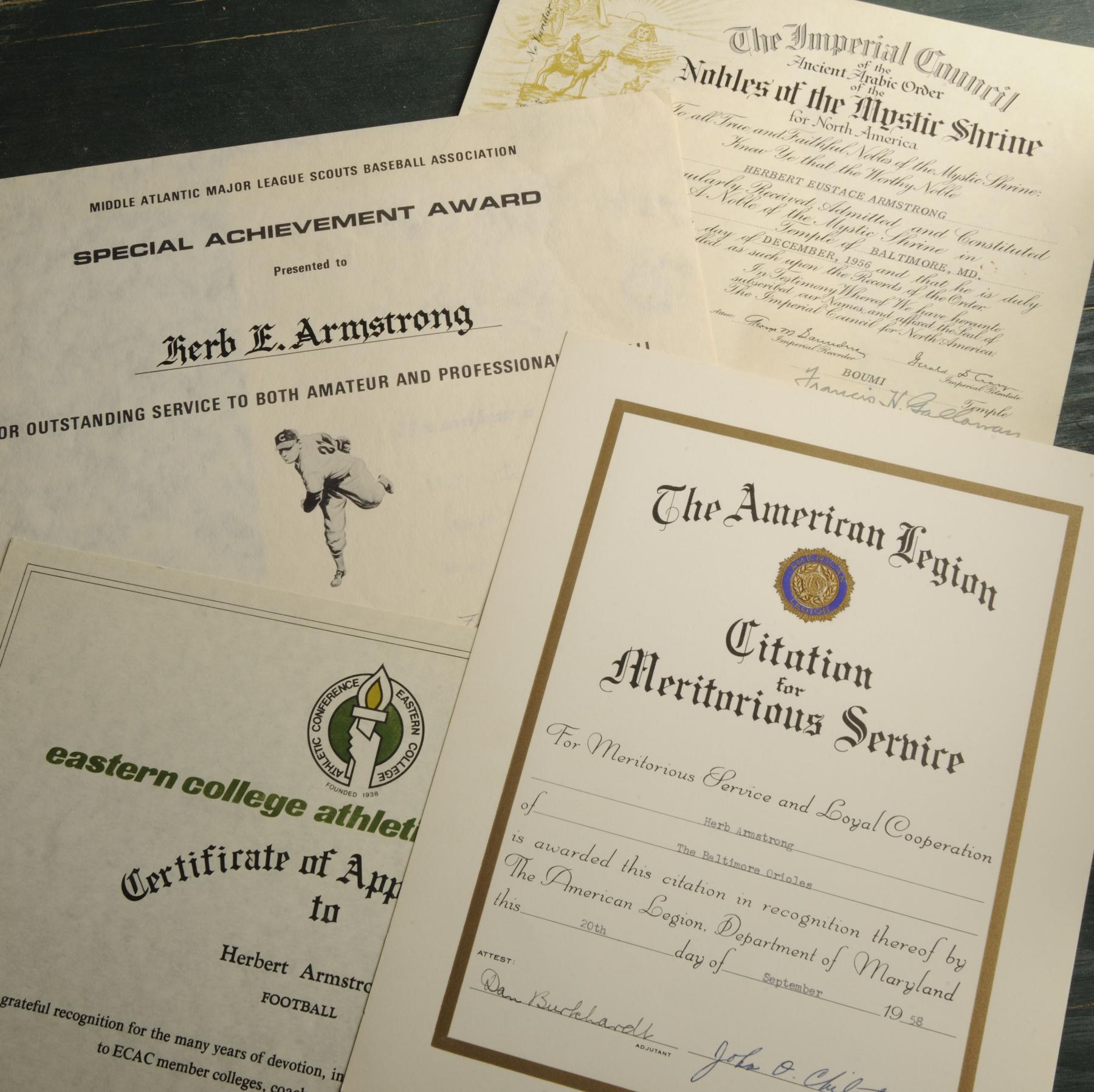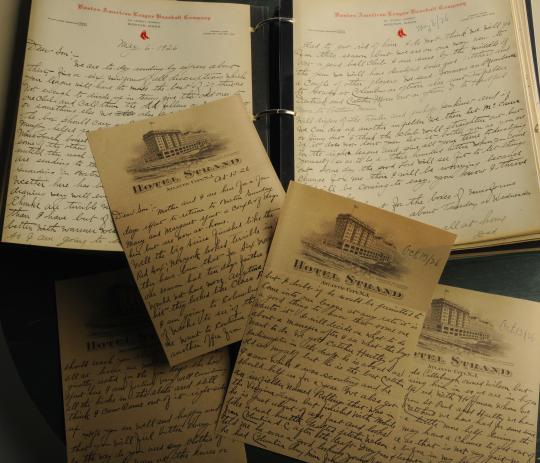Life in the Archives
The Dick Armstrong Collection, BA MSS 110, features organizational and personal papers of a father and son who worked for the Baltimore organization. Herbert Armstrong was the business manager from 1953 – 1973. Richard Armstrong, who delivered this collection to us, was appointed public relations director for the Orioles in 1953, but left the business of baseball in 1955 to study theology. As I am organizing this collection, I come across holiday letters which were sent out every year, personal correspondence. I read about children growing up and going to college. There are weddings, births, retirement banquets followed by obituaries.
Claudette Scrafford is the manuscript archivist at the National Baseball Hall of Fame and Museum






